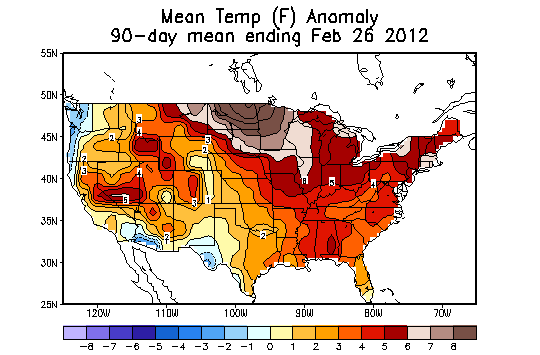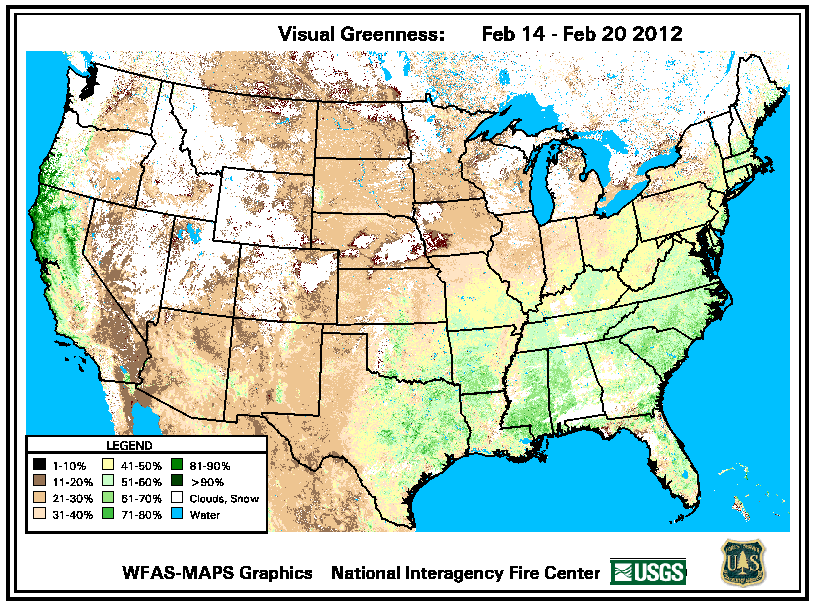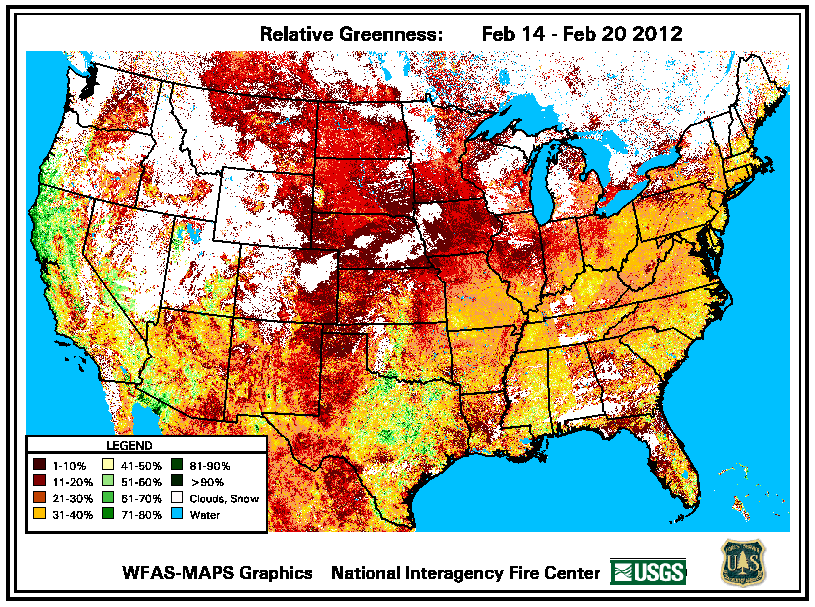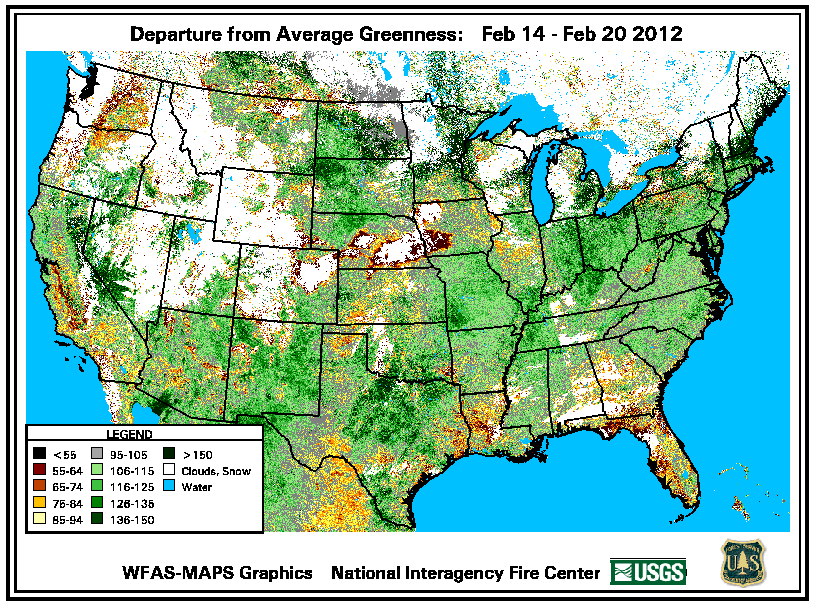Ticker for February 28, 2012
MESONET TICKER ... MESONET TICKER ... MESONET TICKER ... MESONET TICKER ...
February 28, 2012 February 28, 2012 February 28, 2012 February 28, 2012
Ignore the dust today, think green
On this day when excitement boileth over about possible severe storms, let me
inject a bit of mundane, boring climate info into the discussion. We all know
that winter has been unusually warm across most of the U.S. (sorry Alaska ... I
didn't move you so far north!), as shown by the mean temperature anomaly map
from the NWS' Climate Prediction Center.

Mean temperatures have been 2-4 degrees above normal down in our neck of the
woods, and a ridiculous 8+ degrees above normal in the Northern Plains. Add
that to enough precipitation to keep things percolating and you get plants
thinking it's a bit farther along on the calendar than it really is. This next
batch of figures from the USGS are views from space of the vegetation across the
U.S. based on the Normalized Difference Vegetation Index (NDVI). Basically, how
green does it look from up there.
The first map is the Visual Greenness (VG) which portrays vegetation greenness
compared to a very green reference, such as an alfalfa field or golf course.
It shows the wheat belt across the southwestern through north central Oklahoma
pretty well, then lots of green across the southeastern U.S. The white areas
are where it was cloudy enough to disrupt the view for the week of Feb 14-20.

Next we see the Relative Greenness (RG) map, which is a view of how green the
vegetation is compared to how green it has been historically for the period
1989-2003. What we see here is again the greenness of the wheat belt in
western Oklahoma and northwest Texas, but also lots of room left across most of
the U.S. to green up.

The final map we see is the Departure from Average (DA) map. This map compares
how green it is now compared to the average greenness for the week of Feb 14-20
from 1989-2003. Now it becomes clear what that warmth has done to speed up the
clock on plants coming out of dormancy across most of the U.S. A few areas are
very much more green than they usually are this time of the year, at least
based on data from Feb. 14-20, 1989-2003.

There are a couple of implication of this type of acceleration of the maturation
process. A significant cold snap could damage vegetation that has matured
beyond its weeks. Another concern would be additional growth of vegetation
before spring that could lead to increased wildfire danger through added fuel
potential should drought intensify. That could send that additional growth
back into dormancy leaving it more susceptible to fire.
One interesting area on that last map is the High Plains of the Panhandles of
Oklahoma and Texas and up into southwest Kansas. That area is not only
continuing to suffer from significant drought, but also spent about half of
December in a blizzard-induced deep freeze. I'm not sure which is more
significant, but the combination of the two kept that area from greening up
as much as the surrounding areas.
Places like Florida, which are also behind a bit in their greening process have
seen drought conditions increase dramatically during this La Nina event, which
probably accounts for their lag time.
There now, are you still awake? Then allow me to say something which you almost
NEVER hear me utter: not a good day to be in the Oklahoma Panhandle, at least
according to the NWS forecast for that area.
"This Afternoon: Areas of blowing dust. Mostly sunny, with a high near
66. Very windy, with a southwest wind between 40 and 45 mph, with gusts
as high as 65 mph."
What moisture they did have out there will disappear rapidly with more days
like that.
Gary McManus
Associate State Climatologist
Oklahoma Climatological Survey
(405) 325-2253
gmcmanus@mesonet.org
February 28 in Mesonet History
| Record | Value | Station | Year |
|---|---|---|---|
| Maximum Temperature | 90°F | HOLL | 2006 |
| Minimum Temperature | 7°F | BEAV | 2019 |
| Maximum Rainfall | 3.70″ | BROK | 2018 |
Mesonet records begin in 1994.
Search by Date
If you're a bit off, don't worry, because just like horseshoes, “almost” counts on the Ticker website!